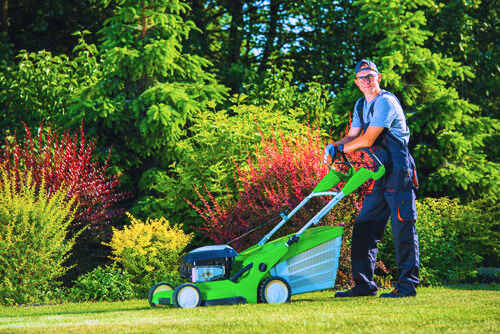Lawn aeration is a crucial process for maintaining a lush, healthy lawn. This technique involves creating small holes or perforations in the soil, allowing air, water, and nutrients to penetrate the root zone more effectively. By improving soil compaction and enhancing oxygen levels, it can significantly improve the overall health and appearance of your yard.
Importance of Lawn in Winnipeg
Winnipeg’s climate presents unique challenges for lawn care, with long, harsh winters and hot, dry summers. These environmental factors can lead to soil compaction, thatch buildup, and other issues that can hinder grass growth and overall lawn health. Regular aeration is essential to address these problems and ensure your garden thrives in the Winnipeg climate.
Understanding the Benefits of Aeration
It offers a range of benefits that can transform the look and feel of your outdoor space:
- Improved Water and Nutrient Absorption: It creates channels in the soil, allowing water, air, and essential nutrients to reach the grass roots more effectively.
- Reduced Soil Compaction: Heavy foot traffic, machinery, and even natural soil settling can lead to soil compaction, which can stunt grass growth. It alleviates this issue by breaking up the compacted soil.
- Enhanced Thatch Removal: It helps break down thatch, the layer of dead and living plant matter that can accumulate on the soil surface, preventing water and nutrients from reaching the roots.
- Stronger, Healthier Grass: By improving soil conditions and promoting better air, water, and nutrient flow, it encourages deeper root growth and a lush, vibrant lawn.
Factors to Consider Before Aerating
Before embarking on your lawn aeration journey, it’s essential to consider several factors that can impact the timing and effectiveness of the process:
- Soil Condition: Assess the soil to determine its texture, moisture level, and overall compaction. This information will help you decide the best time.
- Grass Type: Different grass varieties have varying needs and optimal aeration timelines. Familiarize yourself with the specific requirements of the grass type.
- Weather Conditions: Aeration is most effective when the soil is moist but not waterlogged. Avoid it during periods of heavy rain or drought.
- Usage: Consider the level of foot traffic and activity, as this can affect soil compaction and the need for aeration.
The Role of Rain
Rain plays a crucial role in the effectiveness of lawn aeration. Ideally, you want the soil to be moist but not saturated. Here’s how rain can make an impact:
- Before: Aerating shortly after a rain event, when the soil is still damp, can help the cores (the small plugs of soil that are removed) slide out more easily, creating deeper penetration and better soil exposure.
- After: Rainfall following aeration can help fill in the holes and promote the flow of air, water, and nutrients into the soil, further enhancing the benefits of the process.
- Excessive Rain: Heavy, prolonged rainfall before or after aeration can lead to waterlogged soil, which can hinder the process and even cause damage.
The Best Time for Lawn in Winnipeg
In Winnipeg, the optimal time to aerate your lawn is typically in the spring or fall, when the soil is moist but not overly saturated. Here’s a more detailed look at the best times in Winnipeg:
- Spring (April-May):
- Soil is typically moist from melting snow and spring rains, making it an ideal time.
- Aeration helps prepare for the upcoming growing season, allowing for better nutrient and water absorption.
- This timing also allows the lawn to recover and thicken up before the hot, dry summer months.
- Fall (September-October):
- The soil is still warm, and the grass is actively growing, making it an excellent time.
- Aeration helps the lawn recover from the stress of the summer and prepares it for the winter ahead.
- The cooler temperatures and increased rainfall can help the lawn recover from the process faster.
Regardless of the season, it’s crucial to monitor the weather and soil conditions to ensure you aerate at the optimal time.
Tips for Successful Lawn Aeration
To ensure the best results from your efforts, consider the following tips:
- Choose the Right Equipment: Opt for a core aerator that can effectively penetrate the soil and create clean, evenly spaced holes.
- Aerate when the Soil is Moist: As mentioned earlier, aim to aerate when the soil is damp but not waterlogged for optimal results.
- Overseed After Aeration: Overseeding after it can help fill in bare spots and thicken the grass, further enhancing the benefits of the process.
- Apply Fertilizer: Apply a high-quality fertilizer after aeration to provide the necessary nutrients for robust grass growth.
- Water Thoroughly: Ensure your lawn receives adequate water following aeration to help the soil and grass recover.
Hiring Professional Lawn Care Services
While lawn aeration can be a DIY project, many homeowners in Winnipeg choose to hire professional services to ensure the job is done correctly. Professional lawn care providers have the expertise, equipment, and resources to:
- Accurately assess specific needs
- Determine the optimal timing based on weather and soil conditions
- Use specialized equipment to achieve deep, effective aeration
- Provide additional services, such as overseeding and fertilization, to complement the process
Conclusion: Making the Right Choice
Lawn aeration is a crucial step in maintaining a thriving lawn in Winnipeg’s challenging climate. By understanding its benefits, the role of rain, and the optimal timing for the process, you can make an informed decision on the best approach for your lawn. Whether you choose to tackle the project yourself or enlist the help of a professional provider, taking the time to aerate your lawn can make a significant difference in its long-term health and appearance.
To schedule a free consultation and learn more about our lawn aeration services, visit or call us today.

